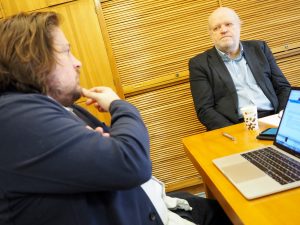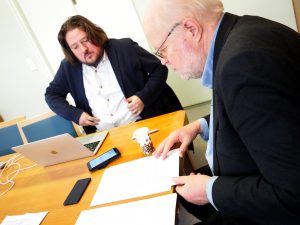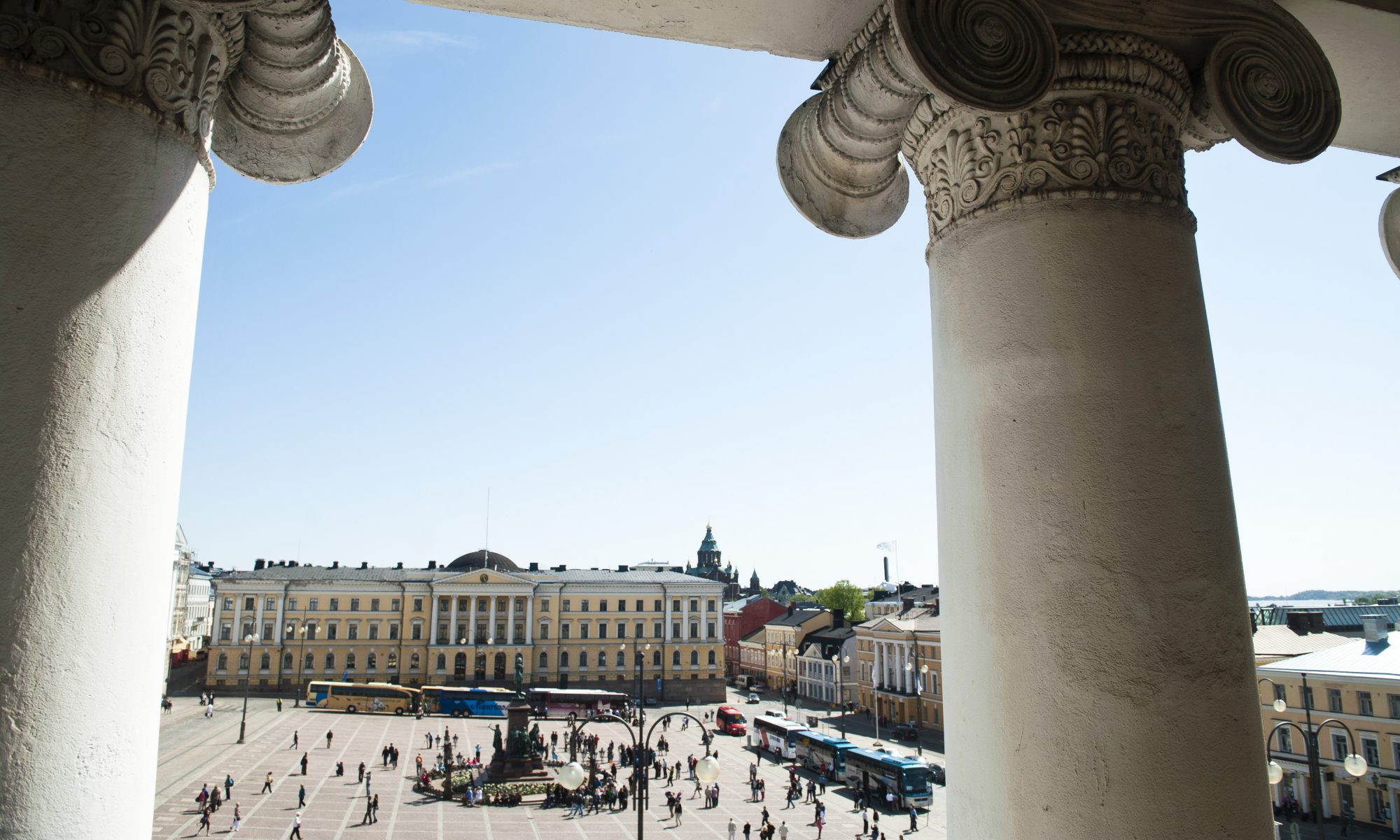In the opening post of the Think Open blog, Vice-Rector Jouko Väänänen and Associate Professor Mikko Tolonen discuss the themes of the new blog. This is the abstract of the original post (in Finnish).
Open science and digital research services are the central themes in the new Think Open blog launched today. The blog features a large number of sub-themes (e.g., digitalisation, open access, open data), which in different ways touch upon the work of a researcher at the University of Helsinki (UH). The University of Helsinki Roadmap for Digitalisation 2018–2020 and vision for 2024 gives direction to the development of research services.
In the opening post, Jouko Väänänen, Vice-Rector of the University of Helsinki, responsible for research, and Mikko Tolonen, Associate Professor at the Department of Digital Humanities, discussed the themes of the new blog.
Mikko Tolonen opened the discussion with a topic that is natural to all major projects: ”How can strategic management be best integrated so that we can build big enough structures without losing agility?” Jouko Väänänen pointed out that the University of Helsinki’s ongoing digitalisation projects were mapped during the planning phase, and some of the projects were included in the Roadmap for Digitalisation. Väänänen also emphasised the planning group’s wide-ranging expertise, the steering group’s determination to strive for results, and the unifying role of Jaakko Kurhila, who has been appointed the chief digitalisation officer of the University of Helsinki.
”We will carry this process forward as planned – this won’t be done for our own pleasure,” Väänänen promised.
Profits for the scientific community
When thinking about open science, Väänänen raised the issue of citizen science. He looked at it from the point of view of democracy: ”Citizens have the right to have access to the results of science and to participate in science through their own intellectual resources.” Tolonen agreed, and emphasised the importance of open data.

”Open data allows not only citizens, but also other researchers and research groups to take part, and it will accelerate science,” stressed Tolonen.
Open data is in many ways a topical phenomenon. Its importance is increasing in the policies of universities and funding organisations – as well as in the eyes of commercial scientific publishers. Both Tolonen and Väänänen emphasised the vigilance of the scientific community in order to continue to control the openness of data in universities.
”The publishers have recognised that money will be made with research data in the future. Journals used to be the thing previously; nowadays it is data mining. The development of data analysis tools and similar means is crucial. In Project Mildred we have taken these small steps forward. We must be able to keep the intellectual capital for ourselves so that we don’t lose it to a commercial publisher, who sells it back to us. This is important,” said Tolonen.
When it comes to research data or research publications, Väänänen is willing to favour actors – publishers and the like – that work for the scientific community.
”For example, Cambridge University Press operates on a commercial basis, but it is not the greediest of money-makers – it works quite well for the scientific community. I’d prefer actors that are launched by the researchers or universities, who can ensure that the potential profits will benefit the research community,” said Väänänen.
The University of Helsinki has already made a move: the Helsinki University Press (HUP), a joint open access publishing venture between the University of Helsinki and Gaudeamus, was launched in spring 2018 – and there’s a call for scholarly open access book proposals until the 6th of June 2018.
”Alternative models do exist”
The University of Helsinki’s goal is for 70 per cent of the UH researchers’ publications to be published openly by 2020 – either through open access publications (gold OA) or by self-archiving (green OA). In addition, there is also a hybrid OA option, which sparked a debate in the national FinELib consortium’s negotiations with Elsevier. In short, there are different ways to carry out open access. According to Tolonen, there are also ways to promote open access without cooperation with major commercial publishers – and some researchers are willing to choose this path.

”Alternative models do exist. Do you think we could be more radical? Do you think we could resign from major publishers that have profit margins of 30 per cent?” asked Tolonen.
”It is essential that universities cooperate not only nationally but also across borders. Organising this cooperation is the most important thing. I don’t take a direct stand on the boycott issue. The ultimate goal of the negotiations is that the research organisations, the academies of science and the universities manage the publishing by themselves. I see this as the only solution,” said Väänänen.
What about metadata?
The challenges of open science are not limited to the activities of major publishers. In the case of open data, one of the core issues is the production of metadata during the research process.
”Open data is relevant only if it contains metadata. But who produces this metadata? The researcher struggles in the midst of difficulties during the research process. How can we persuade the researcher to work for more user-friendly open data? This is a bit more demanding of a question,” Väänänen pointed out.
According to Tolonen, the easiest way to get researchers to pay attention to the quality of metadata is an incentive system. Tolonen sees that publishing the data should be rewarded in the same way as publishing the research results. Väänänen emphasises data citation practices: data citation should be as effective and as rewarding as research publications. A step toward this direction has been taken recently: the Data Citation Roadmap for Finland was released in April. Väänänen also pays attention to the role of funding organisations.
”The Academy of Finland now requires that the research results be published openly. The Academy could require that the data is also published with proper metadata,” said Väänänen.
